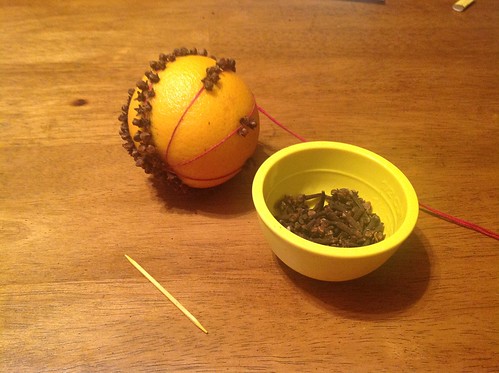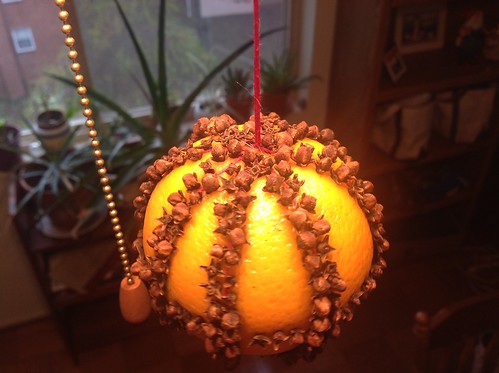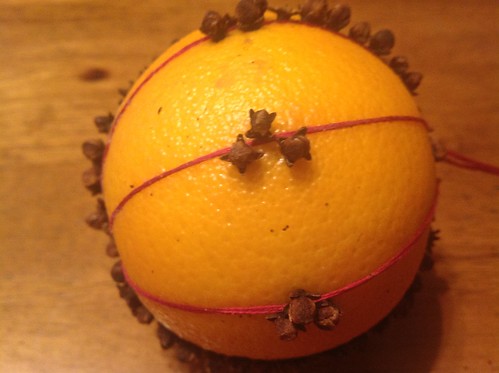Things are happening around here lately. On the professional front, I have a a due-date on Dec 21 – I’ve got a week and change to get things done. Let’s be frank – it’s going to be close. But I’ve already got a lot of the math done, and one of the sleeves done, so I think I’ll be good on turning this in on time. It helps that the sample I’m making is only for myself – the company makes their own samples, so I don’t have to have my sample quite done by the time the written pattern is in. The hard part? My math has to be spot on.
Michael and I went and got a tree last night. It’s fat and pretty and now dominates the apartment. It smells of pine trees. After we brought home the tree and set it up, Michael took to stringing lights right away, but I had some emails to send. When I turned around after (well I’m not quite sure how long…) I’d finished, the apartment was a glowing belighted place. Michael did a good job.
The only thing left for me to do was make a Pomander. What’s a pomander? Well, sources argue about its origins, but around the 15th century they were being used as air-fresheners in more fortunate homes. Made of cloves and oranges (both expensive items) they were a classy way of spicing up the air. I learned to make them in Sweden when I was abroad, though they pop up all over Europe and the United States. I can’t vouch for anywhere else (so international readers, pipe up if you know what a pomander is, or if it has a different word).
What you basically do is take whole cloves, and poke them into any hard-skinned citrus fruit like oranges, clementines, mandarins, and more rarely lemons and limes. They work like an air freshener, infusing the air with orange essential oils and the smell of cloves.
He’s the process of making mine:
 |
| What you’ll need: a medium sized orange (one that looks nice and smells even better), about .75 oz of cloves, string and a toothpick, small knitting needle or small grade nail. |
 |
| You want to use as many cloves as you have. The more cloves in the orange, the less likely it is to mold. Also, the more fragrant. |
 |
| Hang your pomander. As it ages it will shrink, and you might have to push the cloves further in or tighten the string/ribbon. |
Have fun!




